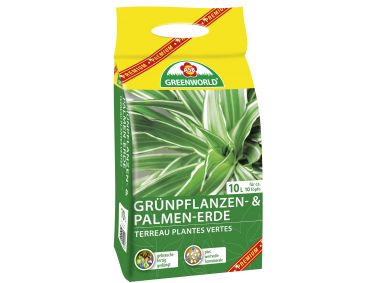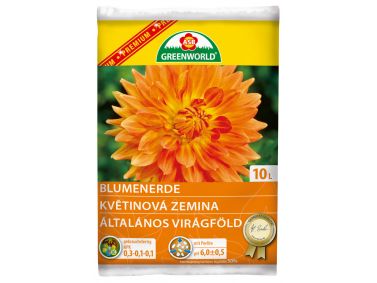
One takes
- Pot/container with a water drainage hole, around at least 2 – 3 cm larger than the old pot (at least 4 – 6 cm larger diameter).
- Drip dish or planter in a suitable size.
- Loose, humic houseplant soil. Depending on the type of plant, it is supplemented with additives (e.g. pumice).
- Houseplant fertiliser to mix into the soil. Or appropriate fertiliser sticks.
- Scissors. Tying material (sticks, string, etc.) if required.
- Watering can.
Repotting

Remove dead leaves and shoots. Prune the plant if necessary.

Carefully remove the plant from the current pot. Remove loose soil and any dead roots. Place in the new container at the
same height.
Fill up with new soil. Mix some fertiliser into the top layer or insert fertiliser sticks. Lightly press the soil.

Place the plant in the drip dish and water carefully.

Maintenance

Select a bright, consistently warm spot for your houseplants, without a draft.

Most green plants require a constantly moist root area. However, only water the plants when the soil feels dry. If you are uncertain, soil moisture indicators can help.

As soon as the solid basic fertiliser has been used up (take note of the information on the fertiliser packaging), a liquid fertiliser is added to the irrigation water (dosage according to the product description). Or insert more fertiliser sticks.

Regular parasite control, especially for scale insects and mealybugs, spider mites. Remove any possible parasites.

Ensure higher air humidity in the winter by means of spraying, water evaporation, etc.

Light requirements
A lot of light is crucial for the good growth of green plants in your home. Even if the plant‘s light requirements are described as “moderate” or “low”, it needs a location that is bright for the human eye. Thanks to special plant lights, the selected spot can be optimised.
Cleaning of leaves
Dirt (e.g. dust) on the leaves prevents light from permeating the leaves. The plant can assimilate better when its leaves are clean. Smaller plants can be “rinsed” from time to time. For larger plants, cleaning wipes and leaf sprays are available to purchase in store.
Dormancy period
Most of our houseplants originate from areas where it is warm all year round. Nevertheless, most of them switch to a dormancy period. Here, with us, optimally in winter when the light supply is already low. During this time, the plant should be watered less and not fertilised.
Recommendations

ASB Greenworld Premium Potting Soil, 10 L
All purpose potting soil for all foliage and flowering plants. Ready-to-use, enhanced with …
ASB Greenworld Premium Vitalizing Plant Food, 500 ml
NPK 5-4-6 + trace elements. Liquid fertilizer for all foliage and flowering plants. Immediately …
ASB Greenworld Premium Potting Soil for Green Plants, 10 L
Special soil mix for green plants. Ready-to-use high-grade quality product specially developed for …







